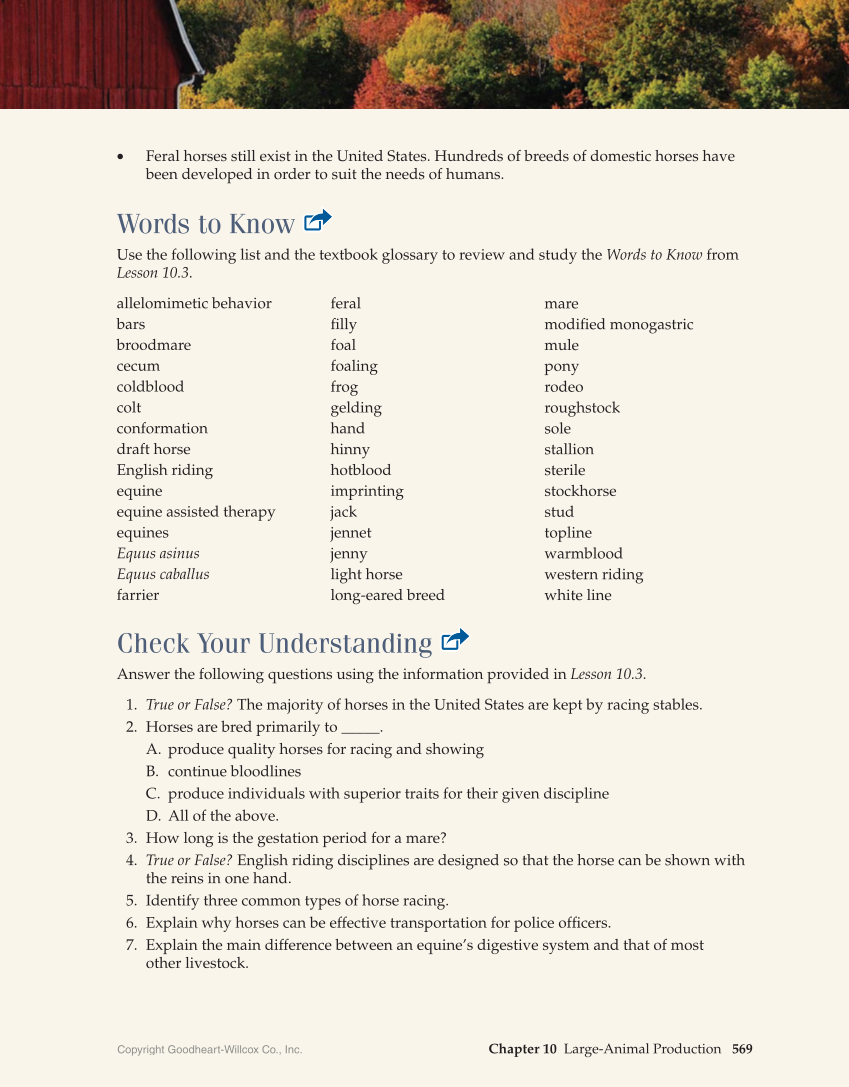Copyright Goodheart-Willcox Co., Inc. Chapter 10 Large-Animal Production 569 „ Feral horses still exist in the United States. Hundreds of breeds of domestic horses have been developed in order to suit the needs of humans. Words to Know Use the following list and the textbook glossary to review and study the Words to Know from Lesson 10.3. allelomimetic behavior bars broodmare cecum coldblood colt conformation draft horse English riding equine equine assisted therapy equines Equus asinus Equus caballus farrier feral filly foal foaling frog gelding hand hinny hotblood imprinting jack jennet jenny light horse long-eared breed mare modified monogastric mule pony rodeo roughstock sole stallion sterile stockhorse stud topline warmblood western riding white line Check Your Understanding Answer the following questions using the information provided in Lesson 10.3. 1. True or False? The majority of horses in the United States are kept by racing stables. 2. Horses are bred primarily to _____. A. produce quality horses for racing and showing B. continue bloodlines C. produce individuals with superior traits for their given discipline D. All of the above. 3. How long is the gestation period for a mare? 4. True or False? English riding disciplines are designed so that the horse can be shown with the reins in one hand. 5. Identify three common types of horse racing. 6. Explain why horses can be effective transportation for police officers. 7. Explain the main difference between an equine’s digestive system and that of most other livestock.
